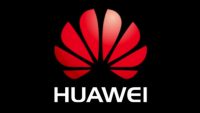When the Commerce Department banned U.S. manufacturers from selling chips to China’s Huawei Technologies, that company increased its own chipmaking capacity in its semiconductor company HiSilicon. According to U.S.-based Huawei executive Tim Danks, in Q4 the company shipped more than 50,000 5G base stations embedded with its chips, about 8 percent of all base stations it sold up to February this year. Danks reported that, although Huawei is ramping up HiSilicon efforts, it intends to return to U.S. technology when possible.
Bloomberg reports Danks added that, “the longer Huawei goes without access to U.S. suppliers, the more unlikely it is to be able to return to using them.” Prior to the ban, Huawei relied on field programmable gate arrays from Intel and Silicon Valley company Xilinx, whose chips “provide flexibility that makes it easier to update machines as new standards and features are added.”

The Trump administration blacklisted Huawei last year after U.S. officials accused the company of “stealing valuable intellectual property and violating a trade embargo with Iran,” as well as potentially providing the Chinese government with “sensitive data coursing through telecommunications networks that employ its gear.”
The U.S. government has been accused of “impos[ing] the sanctions to hobble China’s leadership in key aspects of 5G technology.”
Huawei, whose 5G base stations are “widely considered among the most reliable for the price,” has sold about 600,000 of them. New Street Research reported that, “the Chinese company led the market for base stations with a 28 percent share last year.” Other competitors in the market include Ericsson and Nokia.
Despite the U.S. ban, European countries and other nations continue to buy Huawei 5G gear and supply it with chips.
In the U.S., Xilinx, Micron Technology and Broadcom “all reported falling earnings on reduced or eliminated sales to Huawei.” These U.S. chipmakers “have argued that banning the supply of parts that Huawei can get elsewhere is counterproductive, saying that the lost revenue crimps research and development budgets and the ability to produce the best chips in the future.”
As opposed to chips from Intel and Xilinx, Huawei’s own chips are “application-specific, meaning they’re tailored to particular functions and it takes more time and money to replace them … a disadvantage at a time when new technology, such as 5G, is in its infancy and still subject to big changes.”

No Comments Yet
You can be the first to comment!
Sorry, comments for this entry are closed at this time.